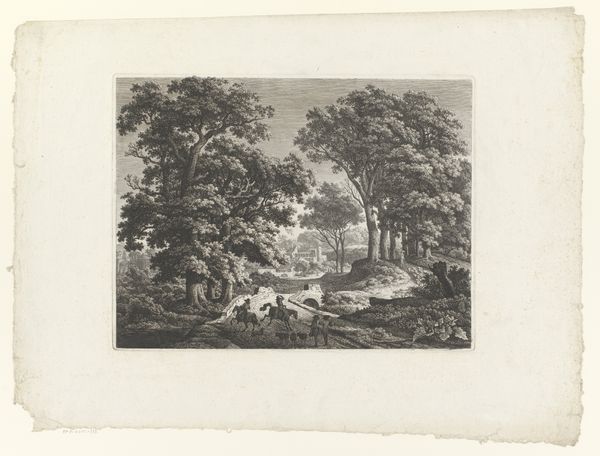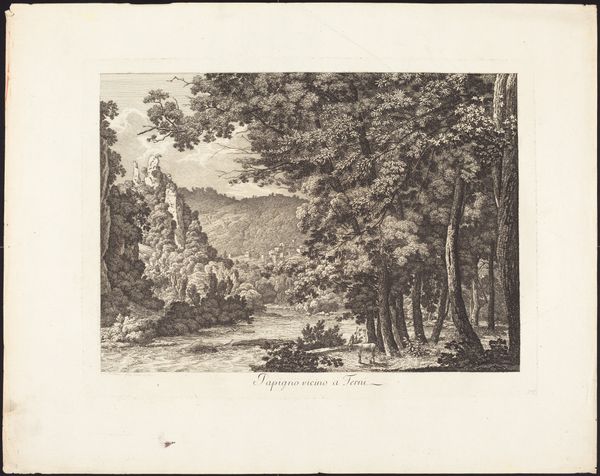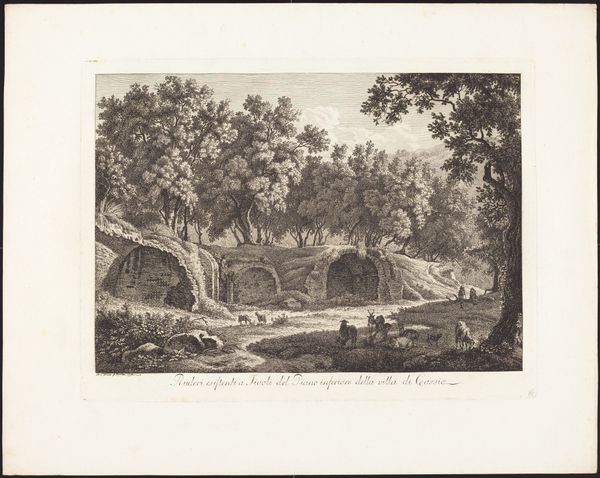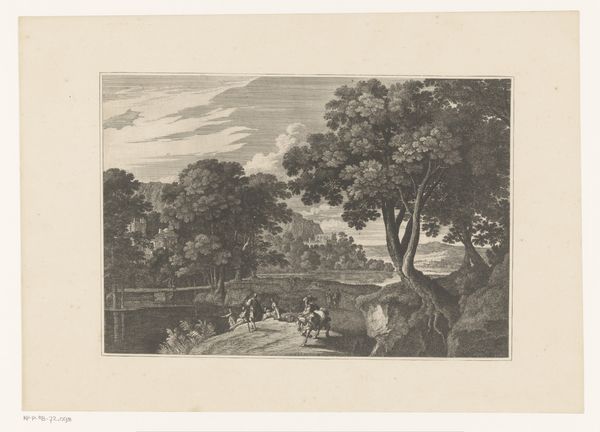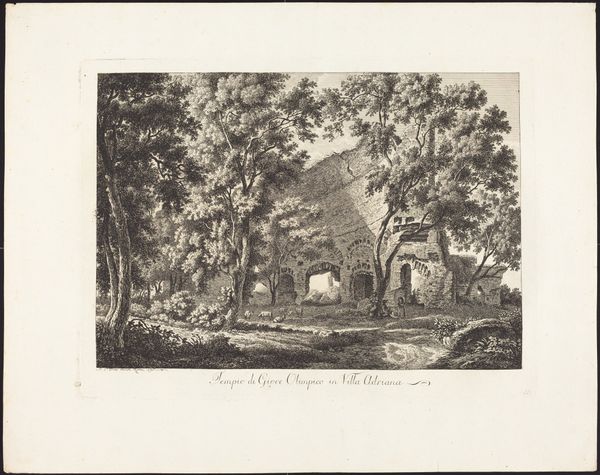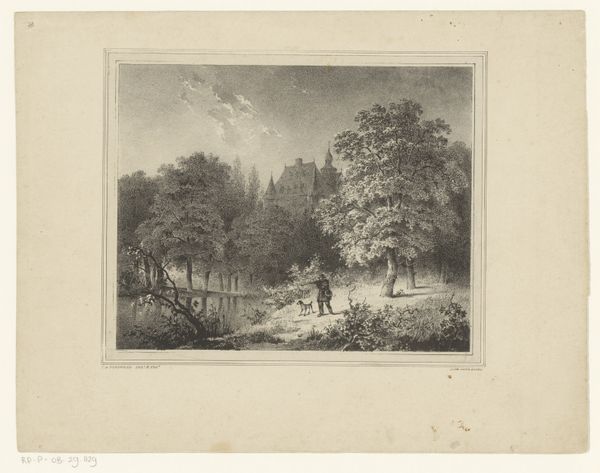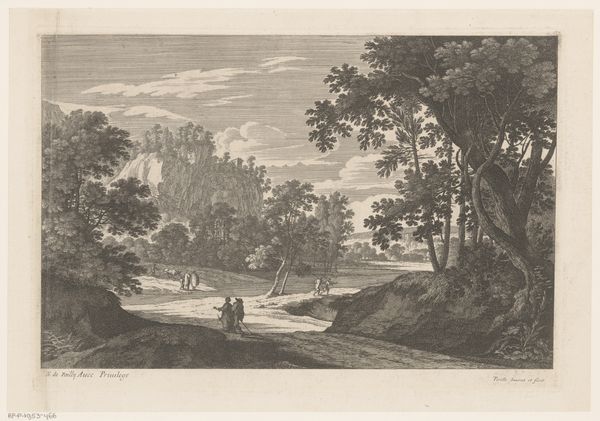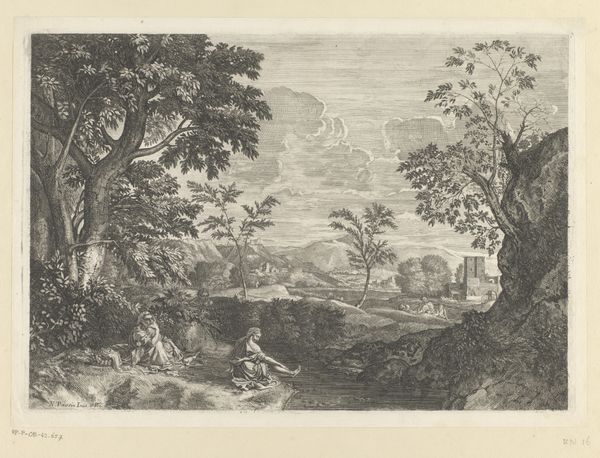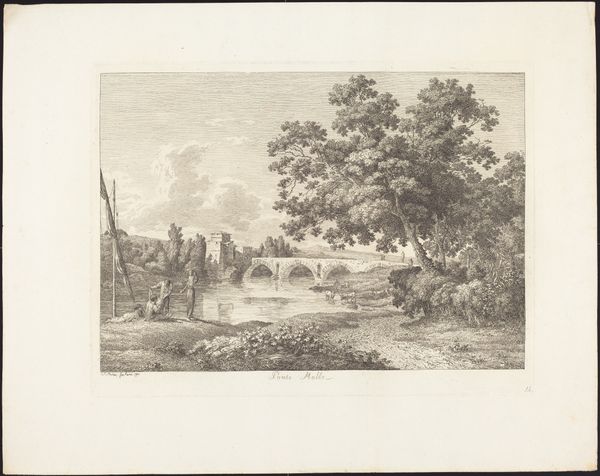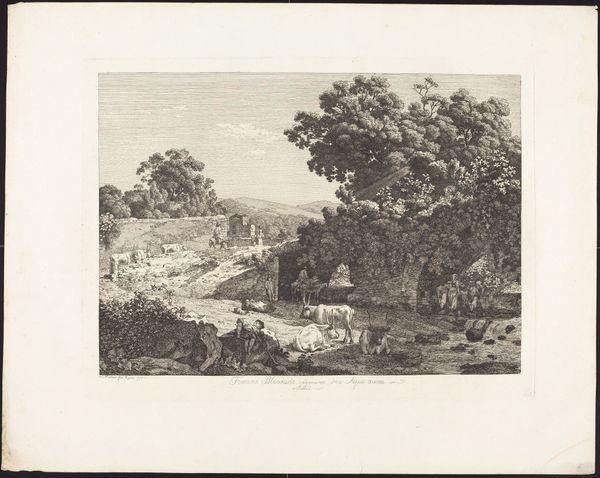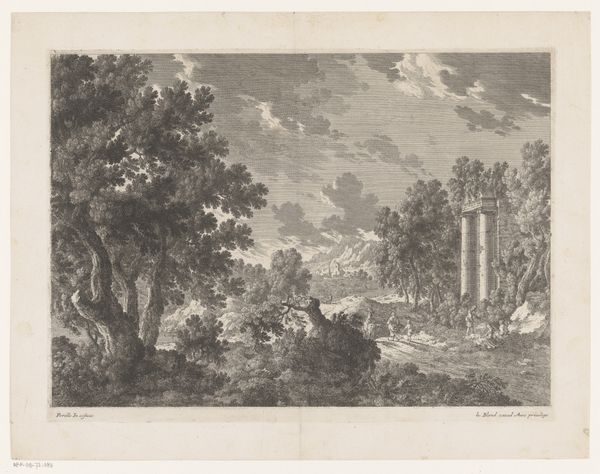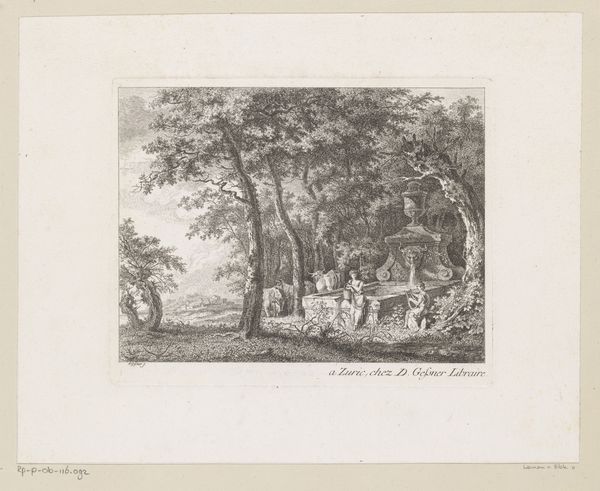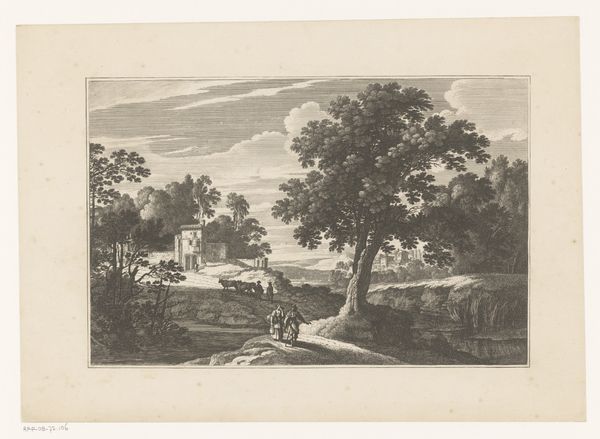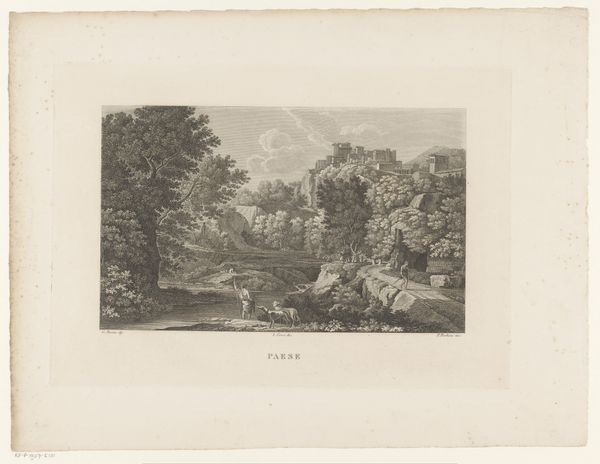
drawing, print, pencil, engraving
#
drawing
#
neoclacissism
# print
#
landscape
#
pencil
#
engraving
Dimensions: plate: 28.1 x 38 cm (11 1/16 x 14 15/16 in.) sheet: 39.1 x 49.2 cm (15 3/8 x 19 3/8 in.)
Copyright: National Gallery of Art: CC0 1.0
Editor: This is Johann Christian Reinhart's "In villa Borghese," from 1794. It's a pencil and engraving print, and I’m immediately struck by how tranquil and orderly the landscape appears, yet there’s also something a little melancholy about it. How do you interpret this work? Curator: The "tranquil" melancholy you observe is really crucial. Think about Reinhart working in 1794, the shadow of the French Revolution looming large. He pictures Villa Borghese not just as a scenic vista, but as a place steeped in history, perhaps even a site of refuge amidst societal upheaval. What does the deliberate inclusion of classical sculpture, that tomb, and the obelisk suggest to you about the artist's intent? Editor: They seem to point toward the past, almost as if inviting the viewer to reflect on time and mortality… is the artist possibly grappling with contemporary politics? Curator: Exactly! And let’s dig deeper into those politics. Neoclassicism was more than just an aesthetic choice; it often served as a visual language loaded with ideals of order and republican virtue. Reinhart uses this visual vocabulary, but the subtle melancholic tone complicates any straightforward interpretation. What happens if we look at it as an elegy for a lost world or an anxious plea for stability in a world undergoing radical change? Editor: I see your point. So, the choice of depicting this idyllic scene is also an indirect commentary on contemporary chaos through the lens of the classical world? Curator: Precisely! The placement of those deer then invites further analysis. Are they merely decorative, or could they symbolize innocence or a yearning for a return to nature, free from the trappings of political turmoil? The artwork becomes an arena where anxieties about history, politics, and the human condition intersect. Editor: Wow, I wouldn’t have considered all those layers without your insight. It is not *just* a landscape, but an intertwined intersection of political anxieties and yearning for stability during an era of revolution! Thank you. Curator: It is this ability of artworks to serve as both historical documents and deeply personal expressions which, in my view, allows for continuous discovery.
Comments
No comments
Be the first to comment and join the conversation on the ultimate creative platform.
